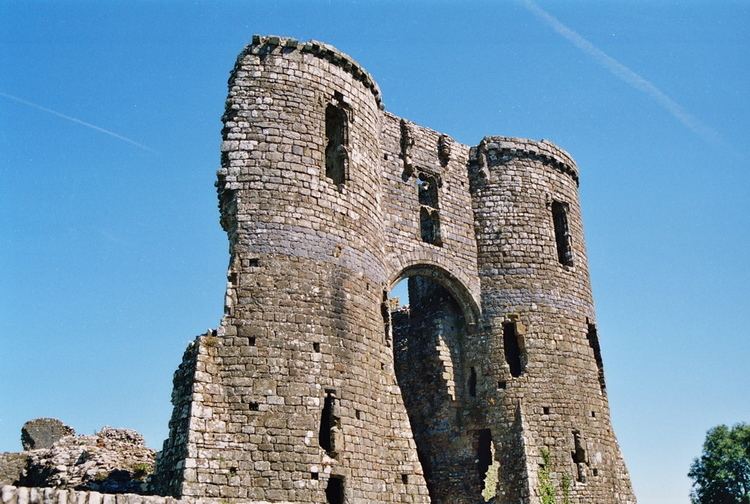 | ||
Address Tal-Y-Bont Hill, Narberth SA67 8HL, UK Hours Open today · 10AM–4PMThursday10AM–4PMFriday10AM–4PMSaturday10AM–4PMSunday10AM–4PMMonday10AM–4PMTuesday10AM–4PMWednesday10AM–4PMSuggest an edit Similar Wiston Castle, Narberth Castle, Manorbier Castle, Carew Castle, Tenby Castle | ||
Llawhaden Castle (Welsh: Castell Llanhuadain) is a castle in the Pembrokeshire village of Llawhaden and 10 miles east of Haverfordwest in southwest Wales, at grid reference SN 073175. A motte-and-bailey castle is thought to have previously occupied the site and the present structure was built by the bishops of the Diocese of St David in the 13th century. The castle was abandoned in the 16th century and some of the stone was removed for local building projects. The site is owned and managed by Cadw.
Contents
Description
The ruins of Llawhaden Castle stands on a hill overlooking the River Cleddau, and is located in the Pembrokeshire village of Llawhaden, some 10 miles east of Haverfordwest. The remaining ruins date from the early 13th century. It is surrounded by a ditch, which was designed to be only crossable by a drawbridge. The castle is pentagonal in shape and while the north-western and western sides of the castle are no longer present, the other three sides remain. The gatehouse is located on the southern side, which is formed of two drum towers and a gateway. This was also where the drawbridge would have been located to allow entrance to the interior of the castle. The ruins are managed by Cadw, and are open the public.
History
Prior to the stone built building, a motte-and-bailey castle was thought to have been located on the same site. It was built by the bishops of the Diocese of St David between the 12th century and 14th century. The first castle on the site was constructed in 1115 by Bishop Bernard. Only the moat and the earth bank from this period survive. The vast majority of the ruins seen today date from the construction commissioned by Bishop Adam de Houghton between 1362 and 1389. This was much grander, with two suites of residences situated on the first floor. The gate house shown in the picture was probably added at a later date.
Additions continued to be made to the castle into the early years of the reign of Henry VIII of England. The building fell into decline under the control of Bishop William Barlow, who in particular sold the lead from the roof of the castle to pay for the dowry of one of his daughters. This resulted in damage to the rest of the building, from which it never recovered. After the dissolution of the monasteries in the 16th century the castle was abandoned, fell into disrepair and has since been quarried for building stone. George Lansbury, then First Commissioner of Works in the Parliament of the United Kingdom, organised a party of 1,300 previously unemployed men for six months to do renovation work on several castles in 1930. Llawhaden Castle was among those worked on, with several tasks undertaken including digging out moats and ditches, as well as removing ivy and undergrowth.
